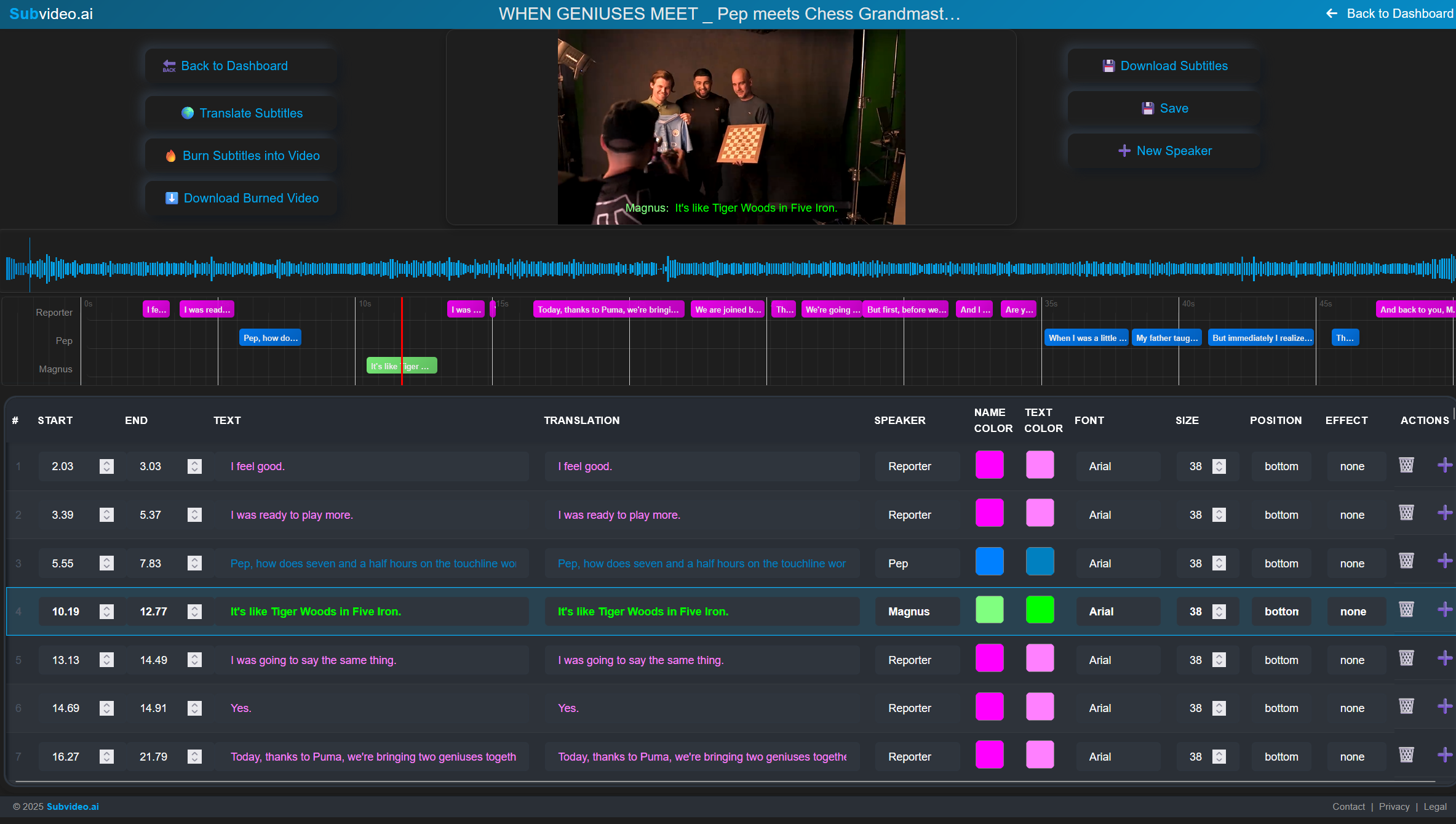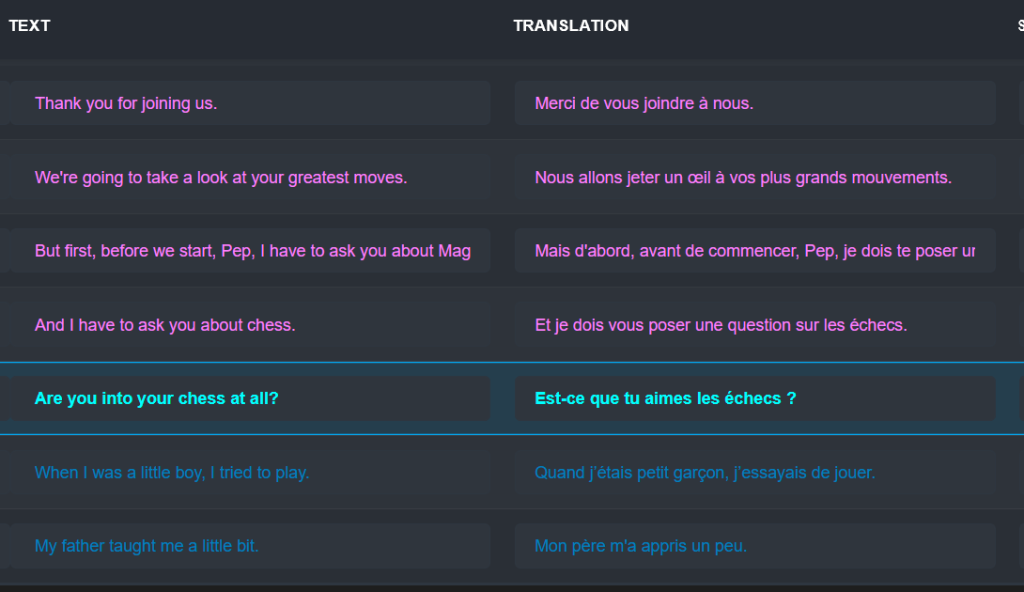📝 Introduction: Subtitle Localization Is the Future
In a world where global audiences consume content across borders and platforms, translating subtitles isn’t enough. What your video needs is subtitle localization—the secret weapon that aligns your subtitles with the cultural, emotional, and contextual nuances of each target audience.
And if you think that’s just wordplay, think again. This post will show you why localization is critical to your video strategy, how it boosts retention and engagement, and how you can easily achieve it using AI tools like Subvideo.ai.
🌍 What Is Subtitle Localization – And Why It Matters
Subtitle localization means adapting subtitles beyond direct translation. It includes:
- Adjusting expressions, idioms, and slang
- Considering cultural sensitivities
- Matching timing and tone
- Adapting measurement units or references
- Adjusting speaker cues or names
Think of it as translating meaning, not just words.
🧠 Example:
In an English video, someone says: “Let’s circle back after lunch.”
A literal translation into Japanese might confuse viewers. A localized version might say: “午後にもう一度話しましょう” (“Let’s talk again in the afternoon”), which conveys the same intent in a culturally appropriate way.
📊 Why Subtitle Localization Boosts Engagement and Watch Time
🔹 1. Cultural Connection = Longer Watch Time
Localized subtitles make the viewer feel seen and understood. This encourages them to stay longer and connect deeper with your content.
🔹 2. Reduced Cognitive Load
Literal translations often feel awkward and force the brain to work harder. Localization ensures that reading subtitles feels natural and fluid, helping viewers stay immersed.
🔹 3. Higher Shareability and Virality
Content that resonates locally is more likely to be shared. When viewers feel like the video speaks their language—really speaks it—they’re more likely to engage, like, and repost.
🧪 Case Study: Localization vs. Translation
Let’s say you’ve created a tutorial video for YouTube Shorts. Here’s what happens in two versions:
| Aspect | Translated Subtitles | Localized Subtitles |
|---|---|---|
| English phrase: | “It’s a piece of cake” | “C’est du gâteau” (Literal FR) |
| Viewer understanding | Confused (what cake?) | Clear (it’s easy) |
| Viewer retention | Drops off after 15s | Watches full 60s |
| Emotional impact | None | Positive, relatable |

⚙️ How to Localize Subtitles Automatically (Using AI Tools)
Manual localization is powerful—but time-consuming. Fortunately, modern AI makes subtitle localization easier than ever.
Here’s how tools like Subvideo.ai simplify the process:
- Auto Transcribe and Translate
Upload your video, and Subvideo.ai generates subtitles in the original language and translates them into 100+ others. - Inline Editing for Local Context
Use the built-in editor to fine-tune phrasing, idioms, and culturally sensitive expressions. - Speaker Styling and Effects
Apply speaker-specific styles, font changes, and positioning to match emotional tone and character roles. - Preview & Export
Preview your localized subtitles in a visual editor, then export as SRT, ASS, or burn them directly into your video.

📚 Best Practices for Subtitle Localization
✅ Work with native speakers for validation, if possible
✅ Avoid word-for-word translation—focus on meaning
✅ Use localization glossaries for brand consistency
✅ Always preview subtitles in context with video
✅ Respect cultural and political sensitivities
🔗 Helpful Resources
- YouTube Creator Academy: https://creatoracademy.youtube.com
- W3C Localization Standards: https://www.w3.org/International/
- Subvideo.ai – Subtitle Localization Studio
🔁 Internal Links (Recommended)
- Read next: Auto Subtitle Japanese to English
- Read next: How to Burn Subtitles into Video Automatically
- Read next: Speaker Recognition in Subtitles – Why It Changes Everything
🎬 Conclusion: Subtitle Localization Is No Longer Optional
If you’re serious about reaching a global audience, stop thinking in terms of translation. Think localization.
Your subtitles should feel like they were written in the viewer’s native language—because in a way, they are.
With tools like Subvideo.ai, subtitle localization becomes scalable, fast, and beautifully accurate. Try it now and see how far your content can go when your subtitles don’t just translate—they connect.